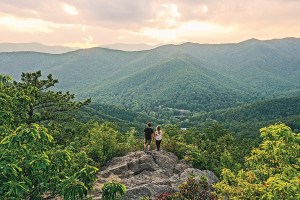A Heritage Travel Itinerary for Colombia
Old-meets-new in the thrumming cities of Colombia, where you'll get your fill of antique shopping, indigenous art history, and Cumbia music.

Take a stroll down Cartagena’s colorful streets. / Photo via Jesse Kraft/EyeEm/Getty Images
Number of Bostonians with Colombian Heritage: 9,009
Shirley Cardona, vice president of sales for EF Go Ahead Tours and a Colombian-American herself, put together this four-day itinerary to showcase the country’s natural beauty, historical impact, and rich multicultural identity. “I believe it’s important to experience, firsthand, the aspects of our culture that make us who we are,” she says.
Day 1
You’ll need to bring an extra bag for the treasures you’re bound to find in Bogotá. Once you’ve made yourself comfortable at the AC Hotel in the cosmopolitan Zona Rosa neighborhood, head just outside to find the area’s best shopping, from stylish contemporary boutiques to noteworthy antiques shops. Standouts include Casa Precis, which showcases emerging Colombian designers, and Librería Errata, where you can find old Colombian books and magazines that’ll help you connect with the not-so-distant past.
Day 2
Staying with the old-meets-new theme, today you’ll take a 40-minute car ride to Bogotá’s La Candelaria neighborhood. Here you’ll admire the vibrant modern-day architecture influenced by Spanish Colonial, Baroque, and art deco styles before learning about the indigenous Muisca people at the Museo del Oro, or “gold museum.” On display are 55,000 pieces of pre-Columbian art and gold that can be traced to the roots of the nation. Toast the day by sampling Colombia’s national drink, aguardiente, at the salsa bar Casa Quiebra-Canto. The libation’s name translates to firewater, so it’s safe to say one cocktail will do the trick.
Day 3
You’ve experienced Colombia’s thrumming contemporary capital and its ancient history—now it’s time to connect with the country’s rich African heritage. The day starts with an hour-and-a-half flight to the coastline, where you’ll check into Hotel Casa La Factoría, a colonial house in the center of Cartagena that’s been converted into a boutique hotel. From there, it’s just an hour and a half to the UNESCO-listed village of San Basilio de Palenque, where a local tour guide will share the story of the escaped slaves who lived there and founded the first free African settlement in the Americas. Cap off your day at Cartagena’s Crazy Salsa with a dance lesson featuring traditional Cumbia music, which combines indigenous flute-playing, African drumming, and European melodies.
Day 4
Although not Colombia’s largest city, seaside Cartagena deserves a full day of your trip. Stroll the walled historical center to spot the famous bright-yellow Clock Tower and the fresco painted on the ceiling of the Teatro Adolfo Mejía by local artist Enrique Grau. Then fuel up with bandeja paisa—a saucer-size tray showcasing white rice, pinto beans, charred chorizo, and an oozy fried egg—at the local institution Rancho Paisa. This can’t-miss dish reflects Colombia’s multicultural heritage, one in which every era of history has earned its place on the plate.
Read more: The Ultimate Guide to Planning Your Heritage Travel Journey


